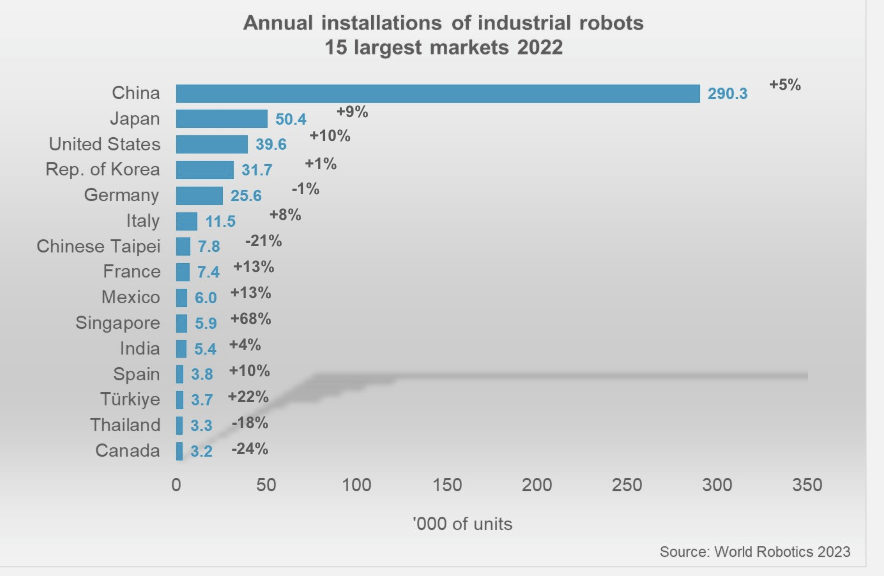
Dicolab. Digital Culture: Free Courses in July 2025
Last free and certified Dicolab courses for professionals in the culture and heritage sector before the summer break: three innovative courses that explore the new

The Bank of Italy Annual Report 2023 paints an interesting picture of the use of robots in the Italian manufacturing sector.
In Italy, industrial robots fulfil increasingly broader functions, in particular in the production of motor vehicles, in the rubber and plastic, pharmaceutical, and computer and electronics sectors. As a user of robots in manufacturing, Italy is third in Europe, after Germany and Spain. If we exclude the automotive sector, the Italian manufacturing industry is the most automated in Europe.
We quote from The use of industrial robots in Italy in international comparison.
“Excluding the automotive sector, where a lower intensity of robot use in Italy compared to Germany and Spain is largely attributable to the different sector specialisation – the high level of automation in Germany and Spain is ascribable to the pre-eminent role played in these countries by the automotive sector, in other sectors the Italian manufacturing industry is the most automated and its evolution over time is similar to that of Germany; these sectors have been joined by the metallurgical, food and pharmaceutical sectors, in which the number of robots installed, initially limited, has grown in the last decade at a faster rate than in other countries”. (Translation 0urs)
Do robots take away jobs?
The Report presents an interesting fact that may answer the question, Do robots contribute to job losses?
“In fact, ‘automation of the production process, especially in the short run, can have labour substitution effects; at the same time, it can increase demand for new professional profiles and can induce productivity gains that, by strengthening competitiveness and increasing the scale of production, can sustain employment levels in the long run. Available analyses show that so far the adoption of robots has had negative effects on employment in the US, positive effects in France and zero effects in Germany and Italy . Based on our elaborations, on average for the four largest economies of the area, the sectors that have increased the most in automation between 1996 and 2021 have had a growth in employment and productivity in line with that of the other sectors: in particular for Italy there is no correlation with employment, while there is a positive relationship with productivity. The expansion of artificial intelligence applications to industrial robotics foreshadows an increasing diffusion of automation that could partly offset the expected reduction in the share of the working population, although the overall effects on labour demand are difficult to assess (see box: The potential consequences of artificial intelligence for Italian workers in Chapter 7)”. (italics ours).
The graphic on the cover is from IFR Word Robotics Report 2023.

Last free and certified Dicolab courses for professionals in the culture and heritage sector before the summer break: three innovative courses that explore the new

The DICOLAB project training courses dedicated to those committed to leading and intervening in the digital transformation process of the culture and heritage sector continues

PRAESIIDIUM Special Issue. We are pleased to launch a Special Issue entirely dedicated to PRAESIIDIUM, a project funded by the Horizon Europe program. This bilingual

SPS Italia and Scuola di Robotica are organising a work table dedicated to girls and young people: students from technical institutes, ITS and engineering universities
Write here your email address. We will send you the latest news about Scuola di Robotica without exaggerating! Promised! You can delete your subscription whenever you want clicking on link in the email.

© Scuola di Robotica | All Rights Reserved | Powered by Scuola di Robotica | info@scuoladirobotica.it | +39.348.0961616 +39.010.8176146 | Scuola di robotica® is a registered trademark